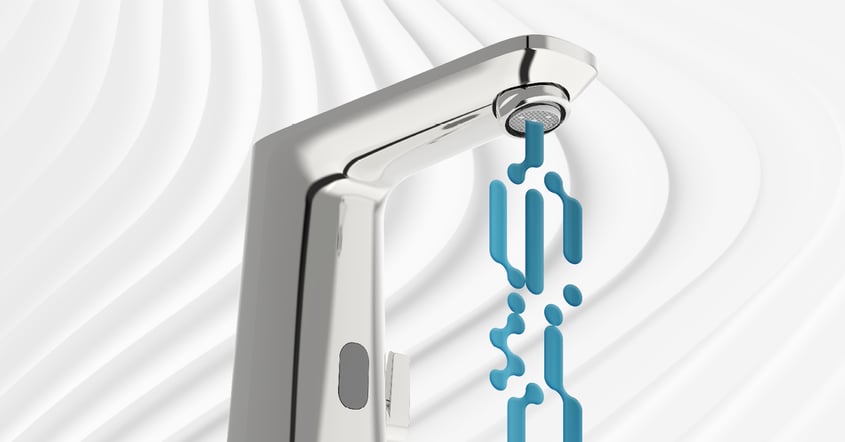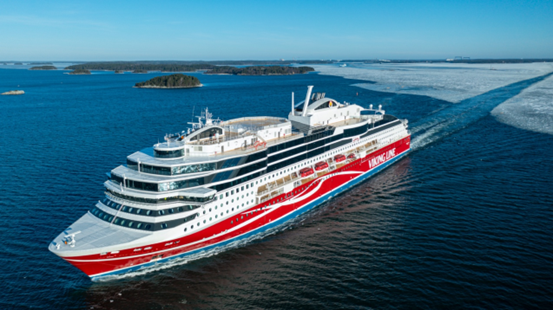
Regular manual flushing of faucets prevents stagnation and maintains water quality. But rinsing all faucets every 72 hours for 3 minutes hot and 3 minutes cold is time-consuming and resource-intensive.
A HANSA water management system with automatic rinsing is an answer to this problem. HANSA customers can now reduce the number of flushes and shorten the flushing time based on consumption data. Knowing which faucets must be flushed reduces unnecessary water consumption without compromising water quality.
Based on the data collected by HANSA, automatic flushing can save up to 60% water compared to manual flushing. The reduced water consumption and automated tasks also lead to considerable savings.
All faucets can be connected to the HANSA water management system via a data module and a gateway. A cloud-based dashboard displays the usage data of all connected faucets. HANSA customers can now also change faucet settings and schedule maintenance remotely.
Find out how two of our customers have taken advantage of the HANSA water management system:
Case 1: A kindergarten in Berlin
HANSA replaced manual faucets with touchless faucets in 4 washrooms in Fröbel Kindergarten in Berlin. The new faucets were connected to the HANSA Cloud via a gateway.
The aim was to monitor the use of faucets to maintain good drinking water quality in the building. This was achieved through automated flushing based on usage data.
In addition, the aim was to avoid stagnation and thus possible hazards during service interruptions, such as weekends and vacations.
The second benefit was to save time with automated documentation. The kindergarten received daily automatic reports on faucet usage and quarterly verification documentation.
Case 2: An industrial plant
The same points were also important for an industrial customer. The company has ambitious sustainability goals with a focus on water consumption. With HANSA's water management system, they have made their operations more sustainable. As there can be thousands of faucets in a large industrial facility, user-friendliness was also a major priority. In addition, the switch to centralized water management has resulted in significant savings.
This is how the company benefits from HANSA water management:
- With the usage data, flushing for unused taps is now targeted and automated. This eliminates manual work and unnecessary water consumption.
- The automated documentation saves time and leaves room for other important tasks.
- Proactive battery replacement with notifications of the battery status of all connected faucets. The faucets remain operational and prevent stagnation with automated flushing processes.
The company is also testing the new energy-autonomous Electra Digital+ faucets. Electra Digital+ does not require a battery. The faucet uses the energy of the water flow with the help of turbine technology.
- Last, there is no more unnecessary triggering of touchless faucets.
This was a particular problem the company faced a few years ago. The problem began when high-visibility vests became mandatory workwear in the EU. The vests kept triggering the sensors of older models of automatic faucets, even at a distance of up to 5 meters.
With the new HANSA Electra faucets, the problem is now solved. The new faucets are equipped with next-generation sensors with 2 transmission windows and one detection window. These can be precisely configured in the Bluetooth app or remotely on the dashboard. Advanced sensor settings ensure that water only flows when it should—the reduced water consumption results in considerable savings for the company.
The advantages of a water management system
A water management system offers benefits that go beyond water savings.
For example, it increases operational efficiency and extends the service life of faucets. Here's what you can expect when using a water management system:
- Better control over water flow and pressure. More even distribution and reduced risk of leaks or damage.
- Higher water quality. Reduced susceptibility to bacterial growth, corrosion, scaling or clogging.
- Higher user satisfaction. Lower complaint rates, higher customer loyalty and better brand image.
- More sustainability. Lower environmental impact, higher energy efficiency and better compliance with legal regulations.
- 360-degree view of all water consumption. Faucets, showers, and toilets can be connected to the water management system.



